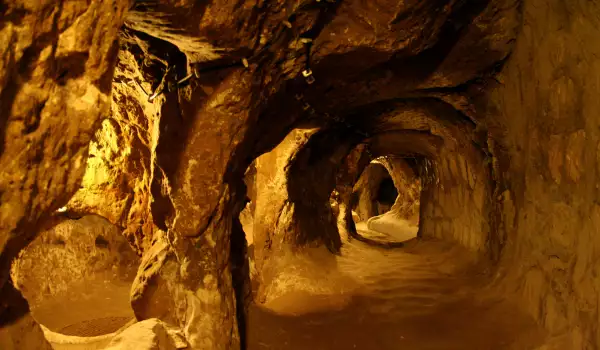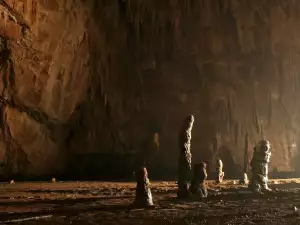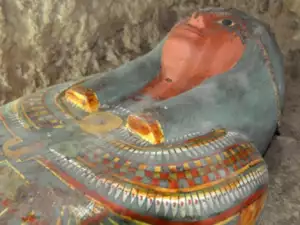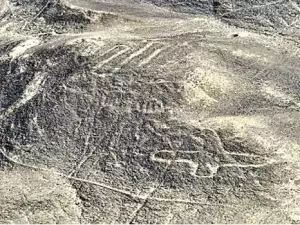For centuries the rumors are that the Knights of Malta participated in crusades and built an underground city on the Mediterranean island of Malta. It stirs up thoughts of secret roads and military labyrinths.
Now it is an open network of tunnels under part of the historic capital of Malta, Valletta, say the researchers. However the tunnels (which may be part of their time ahead of irrigation or drainage system) can break to pieces the previous theories.

Newly discovered tunnels with dates allegedly from 16th to 17th century, when knights of the Christian military orders in Crusades 11th to 13th centuries when Valletta fortified against attacks on Muslims.
Tunnels were discovered on February 24 during an archaeological survey of the Palace Square, the city is in connection with a project for an underground garage.
"Many people say there are passages and even an underground city, " said study leader Claude Borg from Valletta Rehabilitation Project. "But where are the underground tunnels? Are there any? "Now at least we found some of them". The first sign of subterranean Valletta.
Experts think that the newly discovered tunnels, were connected with men being part of a water system used to carry vital supplies to the city although the tunnels were high enough to pass the supplies through them.
Tunnels were discovered in the Palace Square, against the Grand Master's Palace. Former home of the leader Knights from Malta, today the palace is the law of Malta and the office of president.
First, workers found something that is supposed to have been an underground reservoir just below the cobblestones of Palace Square.
Near the bottom of the tank about 12 meters down a large hole was discovered in the wall of the tank leading to the entrance to a tunnel which passes under half of the square and connects to the channel and some of which lead to the palace.
"Attempts to trace these branches have so far been unsuccessful, because the channels were blocked later", said Borg.
The restoration architect suspected the tunnel to be part of an urban water supply system, supplemented by access to ancient passageways and repairs.
Thousands of years of fighting force
Known as the Knights hospitaler or the Order of St. John Knights of Malta, formed in the year of 1099, gained an impressive reputation as a military enemy of the Muslims during the Crusades Series of Christian military campaigns that at the beginning sought and take Jerusalem.
In the year of 1530, Holy Roman Emperor Charles V offered Malta to the knights of the royal island price of a Falcon year.
Although the Ottoman Turks are superior in numbers, the Christian Knights triumphed at the Great Siege of Malta in 1565.
However, experience has inspired them to make the fortress city of Valletta high in the peninsula where is was considered to be safe, however it lacked natural water sources.
Provision of water was a major priority in the construction of the city, the purpose was water coming even during future sieges. "They soon realized that rainwater and wells simply are not reaching, " Edward explained. The water was transported to the city from the valleys preserved by aqueducts.
"The tunnels opening precisely to the Palace Square, supports the idea that the network was designed to carry the water", Edward and the team said.
The tunnel is obviously a great power fountain in the middle of the square supported by an underground tank. The fountain was later moved to the British government of the island from 1814 to 1964. "This fountain marked an important milestone, the supply of water for the city".
They found lead pipes and valves of metal for hundreds of years, connecting branches of the tunnel may include service passes used by the hydraulic engineer or fontanierat knights.
Knights of Health

Other rumors include Valletta's secret underground passage, passing into the port of Valletta city to the palace of the Roman Catholic inquisitor charged with heresies.
Valletta was struck by a plague through the 17th century, when the Black Death epidemic in the year1340, only left more and more memories of its people.
"They wanted to be sure that this will never happen again, " says Edward. In fact, the city water system was much improved in the 16th and 17th century. In contrast, cities like London and Vienna at this time "still lived in their own filth." Edward continues.
Knights of Malta today
Napoleon in the year of 1798 forbade the existence of the Knights of Malta. Today, located in Rome, but still under the name of the Order of Malta, they remain mainly in humanitarian endeavors.
Nevertheless, this month, the Maltese government announced that the plan of findings after an underground garage is left aside.
Planned is the construction of a new fountain in the square, like the original, and hopes for the Secret tunnels to be opened for visits in the future rise high, another reminder of Knights which still bear the name of the island.









